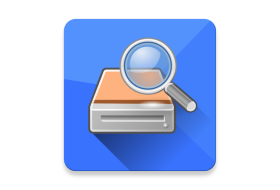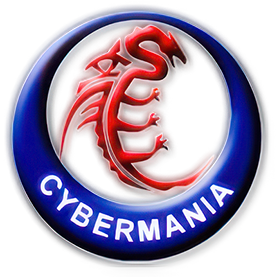
DiskDigger® is a program that undeletes and recovers lost files from your hard drive, memory cards, USB flash drives — you name it! Whether you accidentally deleted some documents or photos from your computer, reformatted your camera’s memory card, or want to see what files are lurking on an old USB drive, DiskDigger is here for you.
DiskDigger can recover deleted files from most types of media that your computer can read: hard disks, USB flash drives, memory cards, CDs, DVDs, and floppy disks.
DiskDigger has two modes of operation which you can select every time you scan a disk. These modes are called “dig deep” and “dig deeper.” Here is a quick list of features for each mode:
Dig Deep
Undelete files from FAT (FAT12, FAT16, FAT32), NTFS, and exFAT partitions.
Recover any type of file.
Filter recoverable files by name and size.
Sort recoverable files by name, size, date, and directory.
Dig Deeper
Scan (carve) entire disk for traces of specific file types.
Supported file types include:
Photos and images:
JPG – Pictures stored in digital cameras and on the Web (Joint Photographic Experts Group)
PNG – Portable Network Graphics
GIF – Graphics Interchange Format
BMP – Windows and OS/2 bitmap image
TIFF – Tagged Image File Format
ICO – Windows Icon
ANI – Windows Animated Cursor
CR2 – Canon Raw image
SR2 – Sony Raw image
NEF – Nikon Raw image
DCR – Kodak Raw image
PEF – Pentax Raw image
RAF – Fujifilm Raw image
DNG – Adobe Digital Negative
SVG – Scalable Vector Graphics
PSD – Adobe Photoshop Image
RAS – Sun raster image
PSP – Paint Shop Pro image
Thumbcache – Windows thumbnail cache
IFF – Amiga images and other media
ART – AOL Art images
WMF – Windows MetaFile
EMF – Enhanced MetaFile
WMZ, EMZ – Compressed MetaFiles
DICOM – Medical imaging format
WEBP – WebP images
PCX – ZSoft PCX images
CDR – CorelDraw images
INDD – Adobe InDesign documents
CP – Adobe Captivate documents
Documents:
DOC – Microsoft Word document (2003 and below)
DOCX – Microsoft Word document (2007 and above)
XLS – Microsoft Excel spreadsheet (2003 and below)
XLSX – Microsoft Excel spreadsheet (2007 and above)
PPT – Microsoft PowerPoint presentation (2003 and below)
PPTX – Microsoft PowerPoint presentation (2007 and above)
VSD – Microsoft Visio document
PDF – Portable Document Format
XML – eXtensible Markup Language
HTML – HyperText Markup Language
RTF – Rich Text Format
WPD – WordPerfect document
WPS – Microsoft Works document
PUB – Microsoft Publisher document
XPS – XML Paper Specification
WRI – Old Windows Write document
ODT, ODS, ODP, ODG – OpenDocument formats
DPP – Serif DrawPlus document
PPP – Serif PagePlus document
Audio and video:
MP3 – Audio format widely used in digital media players (MPEG layer 3)
WMA – Windows Media Audio
AVI – Audio Video Interleave
WAV – Wave audio
MID -Musical Instrument Digital Interface
FLV – Adobe Flash Video
WMV – Windows Media Video
MOV – QuickTime video
M4A – MPEG-4 audio
M4V, MP4 – MPEG-4 video
3GP – Third Generation Partnership video
F4V – Adobe Flash video based on MPEG-4 Part 12
RM – RealMedia video
RMVB – RealMedia video (variable bitrate)
MKV – Matroska video
MPEG – Motion Picture Experts Group
AU – Sun Microsystems audio
MTS, M2TS – MPEG2 Transport Stream
R3D – RED Video Camera video
APE – Monkey’s Audio file
OFR – OptimFROG lossless audio
PPM, PGM, PBM – Netpbm images
WEBM – WebM videos
Compressed archives:
ZIP – Widely used compressed format developed by PKWARE
RAR – Roshal ARchive, used by WinRAR
7Z – Compressed format used by 7-Zip
GZ – Compressed format used by gzip
SIT – Compressed format used by StuffIt for Mac
ACE – WinAce archive
CAB – Microsoft Cabinet archive
SZDD – Compressed files created by COMPRESS.EXE from MS-DOS
Miscellaneous:
ISO – Images of optical media, such as CDs and DVDs
EXE – Windows or MS-DOS executable file
DLL – Windows or MS-DOS dynamic-link library
MDB – Microsoft Access database (2003 and below)
ACCDB – Microsoft Access database (2007 and above)
PST – Microsoft Outlook Personal Folders file
DBX – Microsoft Outlook Express data file
XAC – GnuCash data file
KMY – KMyMoney data file
DWG – AutoCAD drawing
DXF – Drawing Interchange Format
CHM – Microsoft Compiled HTML Help file
TTF, TTC – TrueType font
CLASS – Java class file
KMZ – Google Earth location data
FIT – Garmin activity file
Common Features
Works in Windows 10, Windows 8, Windows 7, Windows Vista, and Windows XP. Both 32-bit and 64-bit versions of Windows are supported.
Also works in Linux.
View recoverable files as a list, or as thumbnail previews.
Thumbnails will show previews of image files, album art from MP3 and WMA files, and icons from executable files!
Selecting a recoverable file brings up a full preview of the file (insofar as possible). For image files, it will show the image (with pan and zoom). For document files, it will show a text-only preview of the document. For certain audio files, it will allow you to play back the sound.
Previews of JPG and TIFF files will show EXIF information (camera model, date taken, sensor settings, etc.).
Previews of MP3 files will show ID3 information (artist, album, genre, etc.).
Previews of ZIP files will show a list of files contained in the archive.
Advanced Features
Able to scan virtual disk image files:
VHD files (Microsoft Virtual Hard Disk)
VDI files (VirtualBox disk image)
Direct binary disk images (acquired with dd or similar tools)
When digging deeper, ability to start scanning from a specific location on the disk.
When previewing files, the program optionally shows the first 4K bytes of the file as a hex dump.
Thanks to MADARA release
(Cracked) x86
